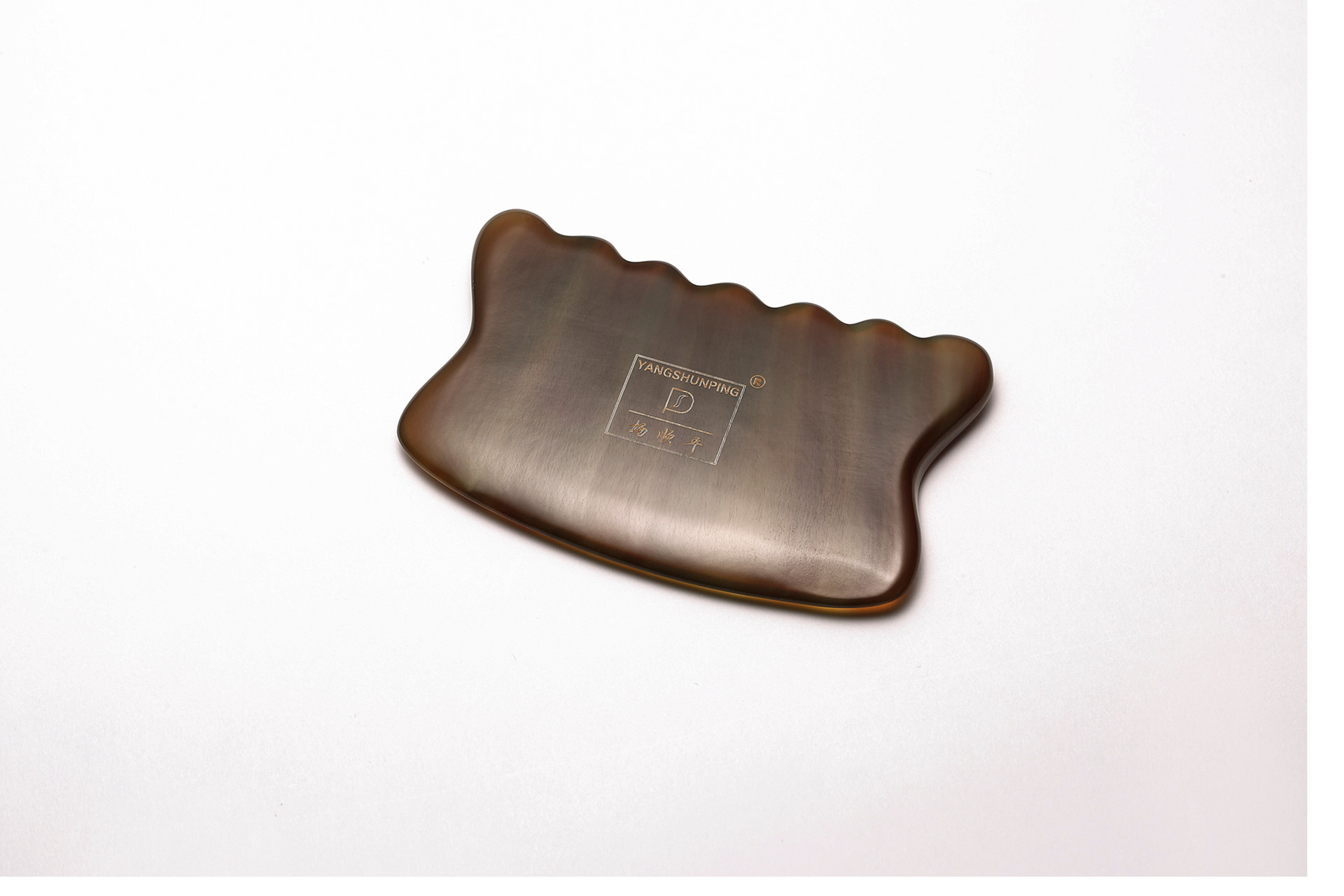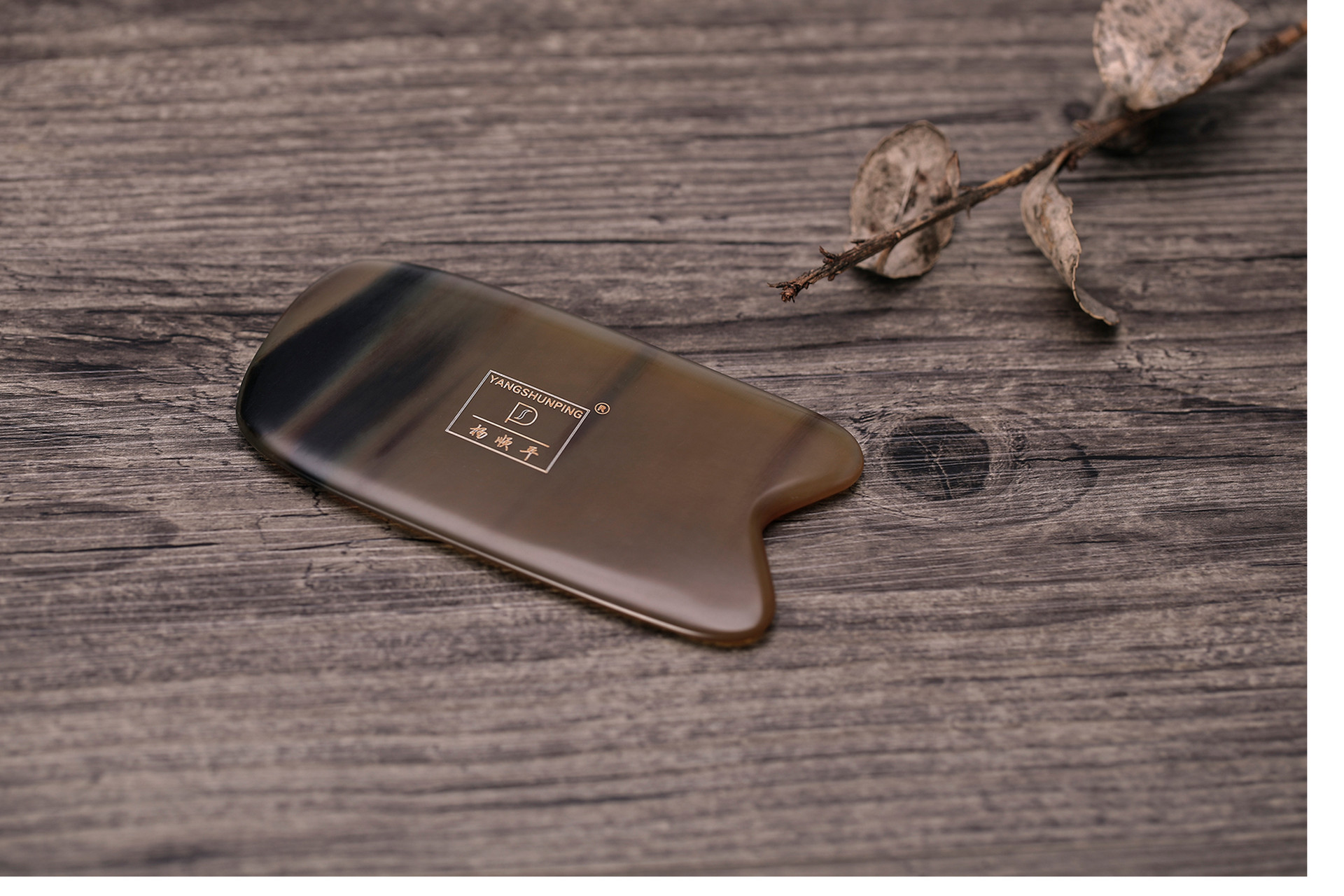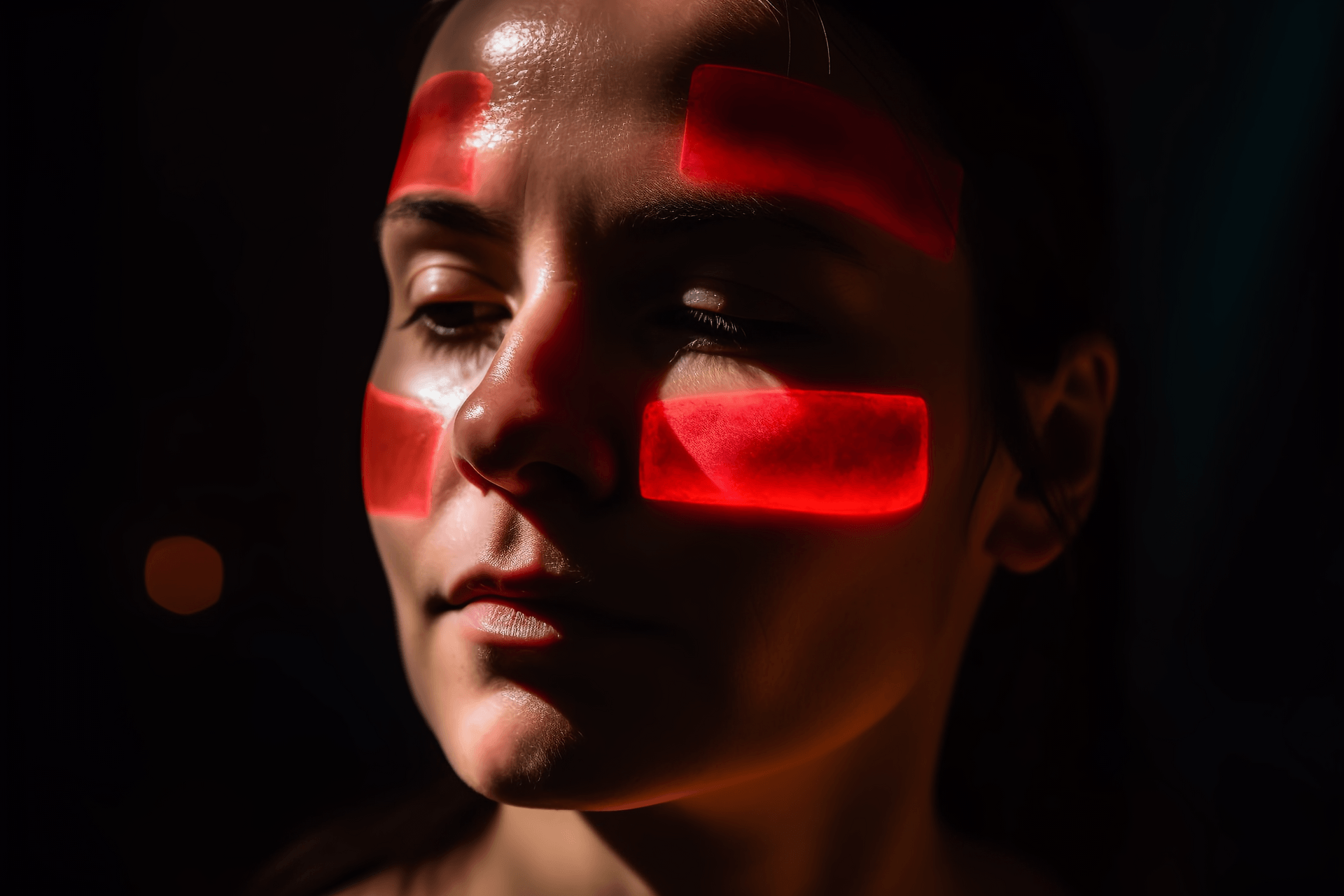Ancient coins are the most commonly used tools in scraping therapy. It has now developed into a professional tool: scraping board.
There are more than a dozen scraping techniques, among which the most commonly used technique is to hold the board in hand, with the thick side of the board against the palm during treatment, and the thin side against the palm during health care. The scraping direction is from the neck to the back, abdomen, upper limbs, and then to the lower limbs, scraping from top to bottom, and from the inside to the outside for the chest. The angle between the board and the scraping direction is generally kept between 45 degrees and 90 degrees. The scraping board must be disinfected. The scraping time is generally 3-5 minutes for each part, up to a maximum of 20 minutes. For patients who do not have sha or have less sha, it is not advisable to force the formation of sha, and the principle is to make the patient feel comfortable. The scraping frequency is generally once every 3 to 5 days after the first scraping, and the second scraping is carried out after the sha has subsided. After sha has formed, the skin may be mildly painful and itchy for one to two days, which is a normal reaction.
Scraping therapy not only can treat diseases, but also has a preventive effect. As long as the skin does not have any diseases, especially bleeding disorders, scraping along the meridians can be beneficial to the body. The preventive effect of scraping therapy is mainly applied to dredging meridians. For example, scraping therapy is more effective for people around the age of 50 who have shoulder periarthritis, but it usually takes two or three times to complete the treatment.
Scraping therapy causes certain damage to the skin, so after one scraping session, a certain period of time, usually about five to seven days, should be allowed before the second scraping. Scraping therapy has the functions of promoting blood circulation, removing blood stasis, regulating yin and yang, relaxing tendons and promoting meridians, and eliminating toxins. It is easy to operate, has significant therapeutic effect, and is widely welcomed by patients.
Accidents that may occur during scraping and their handling: Scraping therapy is similar to acupuncture and massage methods, which stimulate the acupoints of the human body, but only use different tools. Therefore, scraping therapy, like acupuncture, may cause dizziness.
(1) Symptoms of dizziness include dizziness, pale complexion, palpitations, cold sweat, cold limbs, nausea and vomiting, or loss of consciousness.
(2) Prevention measures: fasting and excessively fatigued patients should avoid scraping; patients with low blood pressure, low blood sugar, excessive weakness, and nervousness should be lightly scraped.
(3) First aid measures: quickly make the patient lie flat; let the patient drink a cup of warm sugar water; quickly scrape the Baihui acupoint (heavy scraping), Renzhong acupoint (light scraping), Neiguan acupoint (heavy scraping), Zusanli acupoint (heavy scraping), and Yongquan acupoint (heavy scraping) with the scraping board.
Precautions
Tools and positions: The scraping board is made of water buffalo horn and is rectangular in shape with blunt and round edges. For scraping the back, the prone position is used, and for the shoulders, the sitting position is used. After scraping, there may be purple or blue bleeding spots on the skin.
Indications: Common diseases such as cold, fever, heat stroke, headache, gastrointestinal diseases, stiff neck, shoulder periarthritis, lumbar muscle strain, muscle spasms, and rheumatoid arthritis.
Contraindications for scraping therapy:
1. The abdomen and lumbosacral region of pregnant women, and the nipples of women are prohibited from scraping.
2. Patients with leukemia or low platelet count should be cautious in scraping.
3. Patients with heart failure, renal failure, liver cirrhosis ascites, and severe systemic edema are prohibited from scraping.
4. For lower limb varicose veins, scraping should be done from bottom to top with light strokes.
5. This therapy should not be used for skin that is ulcerated, damaged, or inflamed in the scraping area. It is also not suitable for scraping in cases of serious illness, initial recovery, severe weakness, deficiency of qi and blood, and fullness or hunger.
Frequently Asked Questions
What should be paid attention to during and after scraping therapy?
1. During scraping treatment, attention should be paid to keeping the room warm, especially in winter, to avoid cold and draft. When scraping in summer, avoid direct blowing of the fan on the scraped area.
2. Avoid taking a cold shower within 30 minutes after scraping.
3. Before the sha marks from the previous scraping session have subsided, it is not advisable to scrape the same area again. The interval between subsequent scraping sessions should be 3-6 days, based on the subsiding of the sha marks on the skin.
4. After sha has formed, it is best to drink a cup of warm water (preferably light sugar salt water) and rest for 15-20 minutes.
Does "sha" harm the skin?
The skin may appear red when "sha" has formed, which may look a bit scary. However, there is no need to worry, as the skin is not harmed no matter how red it gets. The depth of the redness usually reflects the severity of the condition. For more severe conditions, the sha marks will be darker.
| 1 2 > >> >>|





